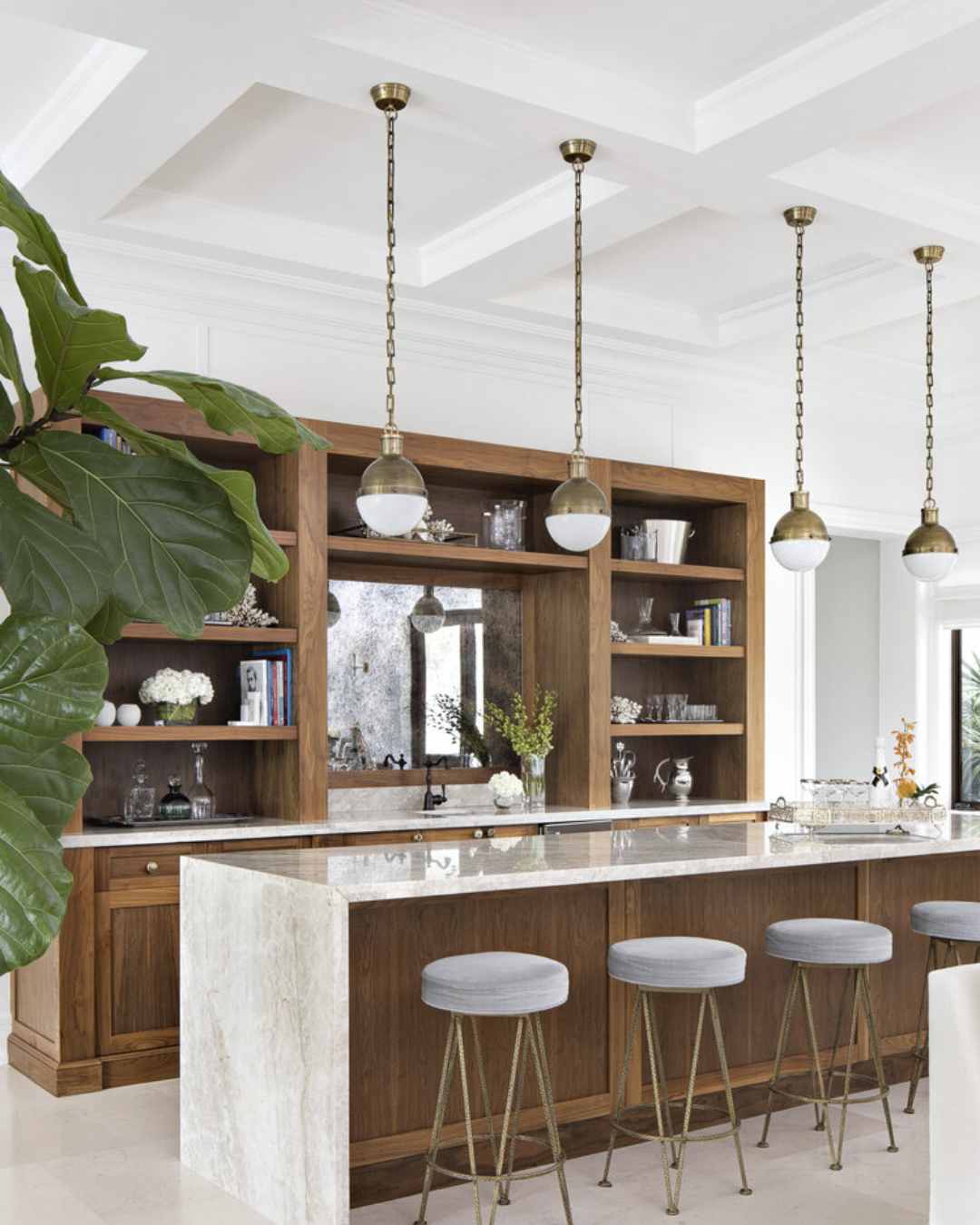Interior designers face similar struggles everyday: one of them being feeling stuck in a certain design style. With hundreds of projects under one’s belt, it’s no surprise that designers end up gravitating towards the same elements over and over again.
So, today we’re doing a short introduction to thirteen different interior design styles, their main components, and example imagery to illustrate the aesthetic. We hope this will give you some ideas about styles you might not dabble in too often, or even just inspire you to think outside the box!
01. Wabi Sabi
Wabi sabi is a style based on Japanese philosophy. In the interior design world, Wabi sabi interiors embrace the imperfection and importance of nature. This is done via small, neutral colour palettes, natural textures, and wooden elements that appear unpolished and somewhat rustic. While this is not a defining feature in any way, you’ll also find many Wabi sabi designs employ plaster or polished walls to give that elemental, primal look. For more information, read this article.

02. Minimalism
Minimalism started out as a philosophical movement in the 20th century, and in the interior design field it has become one of the most popular and well-recreated styles. Minimal interiors tend to be neutral, full of clean, rectangular line, and totally absent of any clutter or thoughtful imperfections. In one word, minimalism is about cleanliness and purity of spirit.

03. Mid-century
Mid-century style refers to the popular pieces and aesthetic of the 50s, 60s, and 70s in the US. There is no unifying list of things that makes a space mid-century, but if you’re going for this look we’d recommend focusing on wood pieces, furniture from the era, and architectural elements in the interior design (e.g. conversation pits, sculptural beams and columns).

04. Scandinavian
Scandinavian style originated in the 20th century, first catapulted by a wave of talented furniture designers. Today, we associate Scandinavian design with neutral palettes with soft pops of colour, avant garde furniture, and a distinct feeling of cosiness called “hygge”.

05. Traditional
Traditional style can mean different things in different countries, as what is considered “traditional” must vary. In the British sphere, traditional styles are all about silk, damask, gold, and ornately decorated spaces. You’ll also see a large amount of antiquities and chinoiserie in this style.

06. Mediterranean
This coastal style is autochthonous to the region of the Mediterranean, especially in beach areas in countries like Spain, Italy, France and Greece. The spaces are pretty close to a Wabi sabi aesthetic, with more of a relaxed beachy vibe, elements of wicker and light fabrics. Mediterranean style is much more adept at hosting interior and exterior events, and prioritising spaces of fun, relaxation and leisure.

07. Luxe
Forget about understated or “old money” rules about displays of wealth – and welcome something a little more out there. Luxe styles are ostentatious, and focus on showing off the acumen of the client. Think quality marble, metallic or gold elements, top-of-the-line fabrics, new EVERYTHING.

08. Eclectic
Eclectic style is super in at the moment, so we wouldn’t be surprised if more and more clients request this sort of maximalist look. The key to this aesthetic is mixing and matching different styles, eras, and geographic markers in one place, and to always bet on colour and the phrase “more is more”. You’ve got this!

09. Industrial
Akin to the cold, mysterious and futuristic vibe of the minimalist style, industrial spaces embrace raw, factory-esque materials and no ornamentation. If you’re trying to capture some of this aesthetic, go for metals, cement, visible steel beams and very straight furniture. This style is not meant to scream “comfort” or “cosiness”, rather, “edgy”.

10. Modern
Modern styles are difficult to define, but they are often associated with minimal, industrial and eclectic movements. Modern spaces often boast of clean lines, asymmetric layouts, new furniture, and a focus on art and pops of colour.

11. Country
Similarly to traditional style, country styles differ depending on the nation we’re talking about. In the UK, country style is defined by old structures, such as stone cottages or country estates, and the antiquities left behind in them. We see a lot of contemporary country-style homes mixing the old and the new to create incredible cosy homes filled with new generation comfort and traditional glam. For examples of modern country homes, click here.

12. Rustic
Rustic style is all about embracing the traditional imperfections of rural life. Rustic homes often use stone, wood and leaves to create a natural aesthetic, where ruggedness is allowed to shine.

13. Your own!
Finally, and most importantly, it is key that you develop, embrace and keep evolving your own personal style to grow with you and upcoming trends. From all the aesthetics discussed, we hope you can incorporate some new elements into your designs.

Thanks for reading this newsletter! We hope you enjoyed it, and if you’d like to learn more about the world of interior design, subscribe to our newsletter.



.webp)